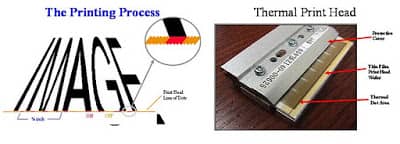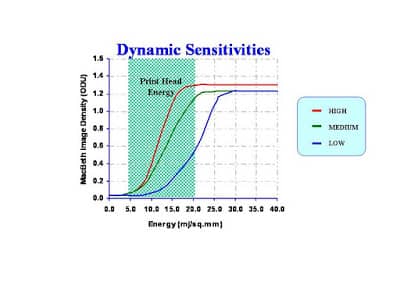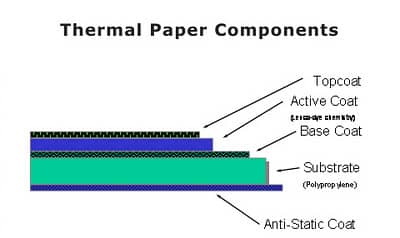Thermal paper: components of thermal paper
Thermal Paper: An Overview
Thermal Paper is commonly used in Point-of-Sale, Cash Register, Credit Card Terminal, Kiosk, Fax, Pay-at-the-Pump, Medical, Casino/Gaming, Self Check-out, Mobile Printer and many others. Thermal Paper differs from bond paper in that the printer doesn't need a ribbon to image the paper. Another advantage of thermal printing is that there are less moving parts which translates into fewer breakdowns. Additionally, thermal printers are much faster than impact printers.

Here is how Thermal Paper works:
In order for Thermal Paper to be imaged, it needs a static heat source like a hot stylus or more commonly by a dynamic source of heat like a thermal print head. This is accomplished by a row of very fine dots that are heated and cooled as the paper is transported across the print head by a step motor.
The density of the image can be measured by how dark the image is when given different levels of energy. See the graph below that shows the activation curve for low, medium and high sensitivity papers. The darkness or density is measured by a Densitometer and paper must be fully imaged or reach a 1.2 density reading to attain the optimum image life for that grade.

Substrate - Paper or synthetic base sheet that comes in different calipers that the coatings are applied to.
Base Coat - Used like a "primer" to seal the substrate and provide a surface that the thermal coating will adhere to.
Active Coat - This is the thermal coating, primarily a leuco-dye based chemistry system that will image when heat is applied.
Top Coat - A clear layer of PVA that seals the active coat and provides environmental resistance and a longer image life, typically used in harsh or stressed environments.

Anti-static coat - This coating is applied to the back side of some papers, but primarily used as an anti-static coating on synthetic base sheets like Polypropylene based thermal grades which can generate or draw static and can burn out electronic components.
Hope this gives you a basic understanding of the construction of Thermal Paper.


